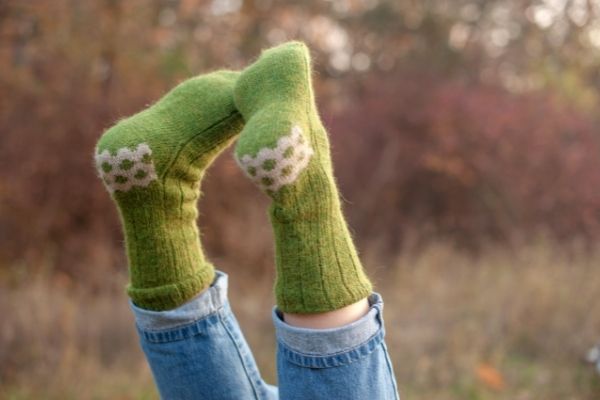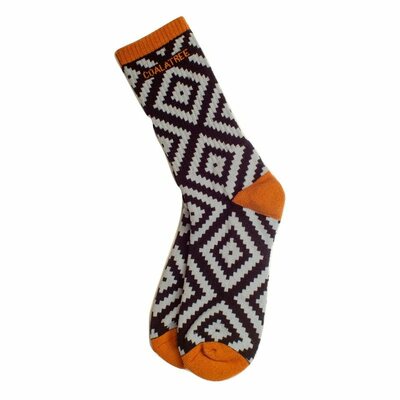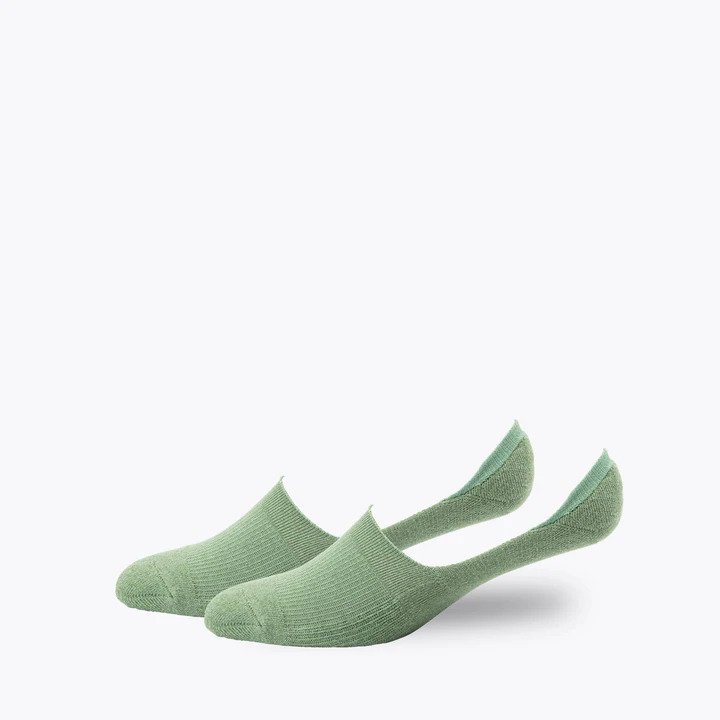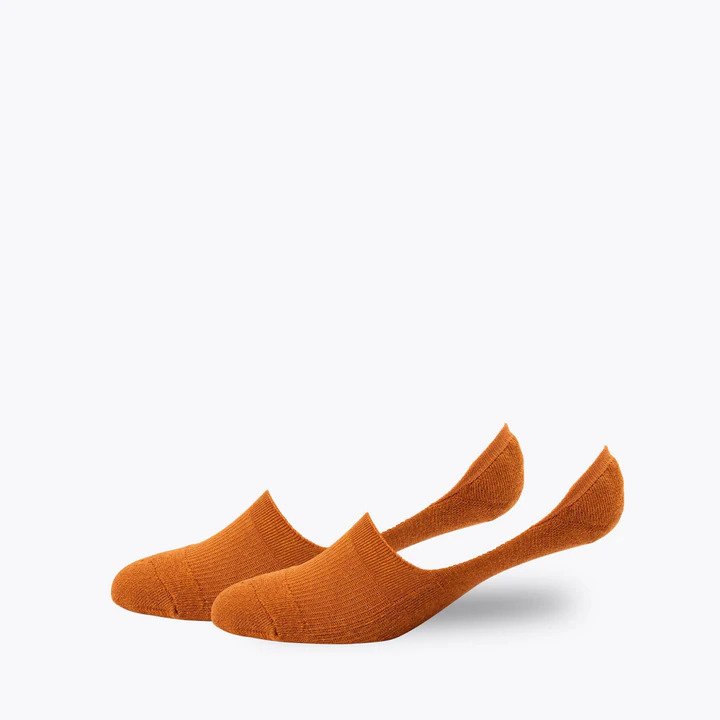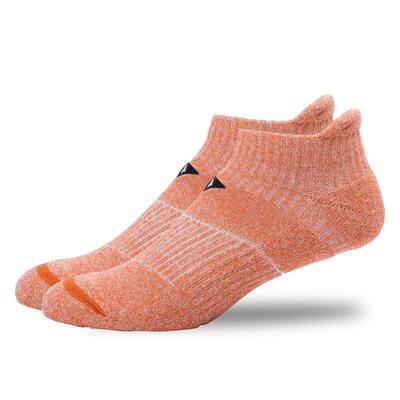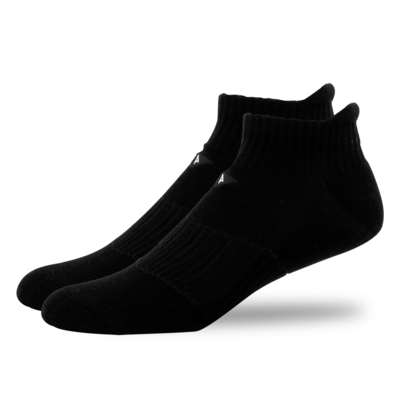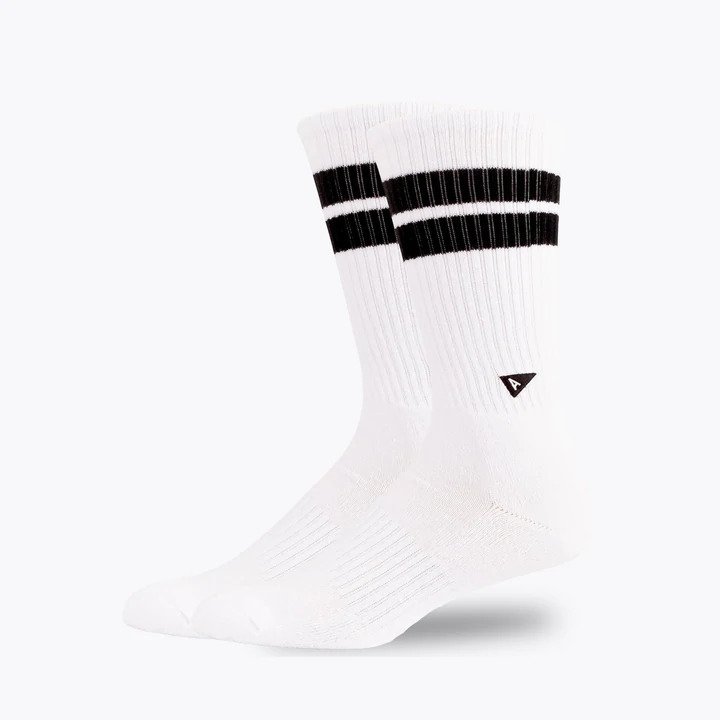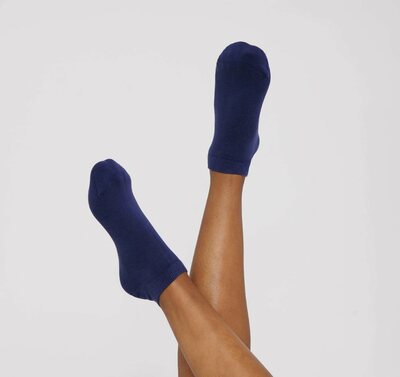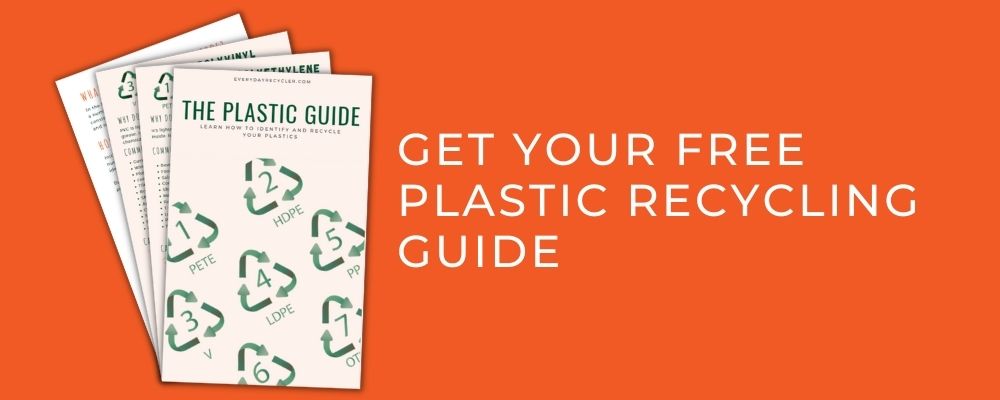Would you rather walk a thousand miles in a pair of socks that are environmentally harmful or in socks that are made from sustainable materials?
Here’s some perspective on why sustainable fashion matters; 10% of the world’s greenhouse gases (1.2 billion tonnes of it) and 20% of the world’s drinkable water that is wasted per year is linked to the fast-fashion industry.1
If that isn’t a good enough reason to support sustainable fashion – we don’t know what is! If you are looking to reduce your impact on the earth then sustainable fashion is a really good bet. And why not start at the very foundation? Your socks.
This is your guide to choosing the right kind of sustainable socks that are earth-friendly, snuggly, and high-quality.
What Are Sustainable Socks Made Of?
In general, the fashion industry is unsustainable for the environment. According to Tencel, 20% of industrial water pollution is from garment manufacturing. During the manufacture of products like socks; harsh chemicals that pollute our air, water, and soil are released into the environment. Instead of mindlessly buying socks, you can keep the planet safe by choosing socks that are made lovingly and consciously from:
Recycled Polyester (RPET):
RPET fibers are made from melted plastic trash rescued from landfills.
Reused Cloth Scraps Or Upcycled Cotton:
Upcycled cotton waste cloth is mindfully reused instead of ending up in a landfill.
Organic, Non-GMO Fair-Trade Cotton:
Organic cotton has a resume of lower water consumption. Plus harmful pesticides or fertilizers are not used during their production which is a massive winner for the environment.
Responsibly-Sourced Yarn:
When choosing responsibly sourced yarn you can be sure that animals are not harmed during the process of extracting their wool.
Where To Buy The Best Sustainable Socks
Let’s look at some of our top picks for sustainable snuggly socks. Here are some wonderful brands that offer high-quality eco-friendly socks.
1) Coalatree | Diamond Java Socks
What do coffee grounds and socks have in common? Coalatree’s Diamond Java Socks, that’s what.
Coalatree makes super-absorbent and odor-wicking socks that are woven from fibers extracted from used coffee grounds, Recycled Polyester (RPET) made from discarded plastic bottles, and recycled cotton. These are possibly the most eco-friendly socks you can find anywhere!
The socks are manufactured using solar power and gray water recycling techniques. Not only do you get a pair of socks that are good for the planet, but also very comfy for multi-purpose odor-free use.
Order your Coalatree Diamond Java Socks now to join the sustainable sock movement! Saving the planet one conscious step at a time through kind socks.
2) Arvin Goods | No Show Socks
Sustainability and affordability don’t have to be poles apart. You can have them both with Arvin Goods’ No Show Socks.
These cool socks are made from 52% Upcycled Cotton, 40% Recycled Polyester (RPET), and 8% Elastane. But the best part? All the fibers used are recycled material, textile scraps, and recycled plastic bottle trash.
Arvin Goods’ major goal is to bring stylish, affordable, and sustainable fashion to the world through reloved textile scraps.
You can rock those cute summer heels with Arvin Goods no-show socks, or team them with some trainers. They’re so comfy, they’re almost invisible.
3) Arvin Goods | Short Socks
Perfect for long days spent at the office, Arvin Goods Short Socks are padded with terry cloth to wick away moisture and elasticized support to provide a slip-free wearing experience.
These short socks are made from 52% Upcycled Cotton, 40% Recycled Polyester (RPET), and 8% Elastane. The upcycled cotton is all reclaimed from textile waste which means you save several liters of water per pair of socks.
Save water, and dress smartly with the Arvin Goods moisture-wicking eco-friendly short socks.
4) Arvin Goods | Retro Long Socks
Remember when long socks and plaid skirts were all the rage? Arvin Goods is bringing that trend back with these classic retro long socks, and we love them!
Padded with a terry cloth footbed to wick away sweat. And equipt with elastic arch support for a superior grip, these socks are perfect for long active days.
Like the other Arvin Goods socks, these too are made from 40% Recycled Polyester (RPET) that comes from plastic bottles rescued from the landfill and 52% Upcycled Cotton.
Stay on trend with a pair of Arvin Goods Retro Long Socks and effortlessly team them with trainers or heels.
5) Timberland | Men’s Arch Support 3 Pack Crew Socks
Using 51% recycled polyester and 12% certified organic cotton as the main materials, Timberland’s Arch Support Crew Unisex Socks are a great start for your sustainability journey. These amazing eco-friendly socks offer arch support for cushioned and comfortable wear.
What we love about Timberland is its commitment to 100% sustainability by prioritizing using recycled materials and planting 50 million trees by 2025.
Go ahead, treat yourself, embrace style and sustainability with Timberland Men’s Arch Support 3 Pack Crew Socks.
6) Organic Basics | Organic Cotton Ankle Socks 2 Pack
Organic Basics is a major pioneer in sustainable fashion. Their women’s socks are made from 85% GOTS certified organic cotton, 13% polyamide, 2% elastane.
The GOTS or Global Organic Textile Standard was developed to define world-wide recognized requirements for organic textiles. Each pair of Organic Basics socks saves 0.23 kg of CO2, prevents 135g of chemical use, and saves 10g of waste from the landfill.
Their organic cotton socks are snug-fitting, extremely soft, gentle on your skin, and perfect for everyday wear. We can’t recommend the Organic Basics Organic Cotton Ankle Socks highly enough.
What Materials Are Socks Made Of?
The most common material in socks is non-organic GMO cotton. But it consumes a hefty 69% of the water used in textile fiber production. And it accounts for 16% of the world’s insecticide use.2
And the synthetic materials used in socks (polyester, elastane, and nylon) are no better for the environment either. Synthetic materials generally do not biodegrade once your socks are in the landfill.
Every year, ½ million tons of plastic microfibers from clothes are dumped into the ocean.3 And to put that into perspective; that’s equivalent to 50 billion plastic bottles!
The damaging effects of fast fashion on the world, and human health is exactly why we advocate for sustainable fashion. Buying from brands that upcycle and recycle fibers is so important. Our planet has precious resources that aren’t being used mindfully. And producing new clothes takes a lot of water and energy, along with emitting harmful chemicals in the process. Protect your health and protect our environment for our future generations by prioritizing sustainable products, such as conscious eco-socks made from biodegradable, organic, and recycled fabrics.
Benefits Of Sustainable Socks
So what are the benefits of using sustainable socks? Does sustainable material really make a difference? And are natural fibers worth the investment?
- Less Waste Generated
Sustainable fashion recycles and reuses materials that would otherwise end up in landfill. You save precious resources from going to waste and also leave unused resources for our future generations. - Better For The Planet:
Sustainable fashion promotes the use of organic materials that don’t use chemical fertilizers or insecticides which improves local biodiversity. Additionally, the use of synthetic dyes is often also minimized, emissions are reduced through upcycling, and microplastics are prevented from reaching waterways. - More Ethical:
Fast Fashion companies keep costs low for the end consumer by outsourcing their production to countries with poor labor laws. They underpay their workers and force them to work in dangerous conditions. Sustainable fashion not only promotes the use of environmentally friendly materials but also encourages fair wages and proper working conditions for the people producing your clothing. - Kinder To Animals And Humans
It’s not just the environment that pays for fast fashion; humans and wildlife also pay for unsustainable fashion. When the environment is contaminated this affects our delicate ecosystem and the food chain can be contaminated. This has worrying effects on human health and wellness.
What Is The Difference Between Cotton And Polyester Socks?
- Polyester is non-biodegradable, and cotton is fully biodegradable
- Cotton is a natural fiber so it is breathable. Polyester isn’t breathable so not ideal for those who sweat a lot
- Cotton tends to be a lot softer than polyester
- Polyester tends to be more wrinkle-resistant than cotton
- Polyester is more durable and longer-lasting than cotton
- Cotton is more absorbent, and polyester is more stain resistant
- Cotton is often more expensive than polyester
- Cotton socks are better for those with sensitive skin
Conclusion
Sustainable clothing may have been inaccessible and out-of-reach for the average consumer a decade ago. But with greater awareness and popularity of sustainable fashion, the cost has significantly come down for consumers. Costs and styles have evolved to meet consumer demand while being true to the environment’s cause.
We encourage you to buy your socks and other clothing from ethical sustainable brands that advocate for long-term sustainability, natural materials, and sustainable materials. Choosing eco-friendly socks is a small step in the right direction.
Want to learn about more eco-friendly and recycled products try these articles:
Resources:
- https://www.bbc.com/future/article/20200310-sustainable-fashion-how-to-buy-clothes-good-for-the-climate
- https://www.soilassociation.org/causes-campaigns/our-climate-in-crisis/thirsty-for-fashion/
- https://www.worldbank.org/en/news/feature/2019/09/23/costo-moda-medio-ambiente
- https://www.tencel.com/fiber-story


